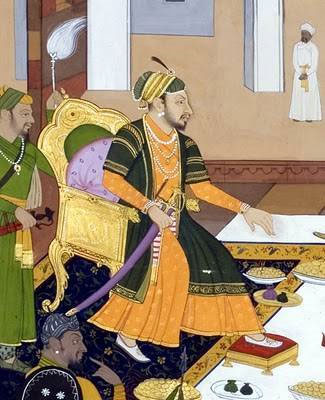The end of Aurangazeb and Louis XIV.
The allies of the Dutch and the Zamorin were at war.
The approach of the English, Cochin and foreign-native powers.

The European forces are expanding throughout the continents advancing through the sea-routes opened by Christopher Columbus and Vasco de Gama in fifteenth century. These forces which came for trade started establishing colonies here and there and even controlling rulers there. But Spain and Portugal which stood ahead in geographical discoveries and sea-voyages harvesting gains at the initial stages, are now in a state of decline. Challenging the duo, the European powers- Holland, France and England- were expanding throughout the world whose reflections were being seen in Kerala. The Dutch and the French became the strong European forces in Kerala. The French had yet to arrive. But Denmark had a small-scale trade of pepper in Edava (near Attingal), Kulachal and Calicut. They have no other interests than trade.
The move of England in Kerala was purely strategic and the Dutch understood it. It was during this period that Francis Day, an English merchant, purchaded a narrow strip of land in Cholamandalam (Madras) from the ruler of Chandragiri, the representative of Vijayanagara Empire and raised a fort there. The Fort St.George, thus, became the power centre of the British in Madras). It was the same way that Bombay was given away to Prince Charles as dowry for marrying the Portuguese princess. It was another achievement that the British, with the right of the places, Kalighat (Culcutta) and Govindapuram secured, raised a fort on them, the Fort William. Besides these they erected another fort at the far south of Kerala, South Attingal. It became the basic factor for their entrenching in India.

Kozhikode and Cochin clashed again in 1710 creating headache to the Dutch. The war waged by Cochin against Calicut with the support of the Dutch lasted for nine years during which time there took place two important events in England and India. In 1707, England and Scotland became one and formed the United Kingdom of Great Britain with two armed forces and two parliaments merging into one. 'Union jack' had become the new flag of the country.
The significant event that took place in India was the death of Aurangazeb when England became Great Britain. It led to the collapse of the Mughal Empire providing opportunities for European powers taking root in India. From then onwards India witnessed a period of quarrels and conflicts.

When the Dutch and the Zamorin were in the midst of a war, the British took steps to start a trade centre in north Malabar and they held consultations with the then ruler of Kolathu Nadu (Cannannore District). The English wanted to erect the fort on the land of Kurungotta Nair. As Nair opposed it, some among the family members of Kolathiry picked up quarrels with him.Then the king of Vadakkumkoor, consequent upon the discussion he held, ganted sanction to erect the fort at Tellichery. The construction of the fort was completed in1708. This fort became significant like the fort at Anjengo in Venad.
The war between Cochin and Calicut came to an end and as per the new treaty the island of Chetuva and Pappinivattam came under the possession of the Dutch. But when it was known that the fort was being constructed the Zamorin lost his sleep .The English at Tellichery was fretting and fuming against the fort and the English head there, Robert Adams gave secret message to thwart the construction, promising clandestine help to Zamorin who agreed to flutter the British flag on it if the fort was captured. The Zamorin began creating impediments to the construction of the fort but to no avail. Then he adopted a strategy of deception and cheating. Disguised as coolies the soldiers of Zamorin sneaked in to the construction site when the 48 workers engaging the construction were staying outside, and captured it under the leadership of Dharmothu Panicker of his side and then razed it to the ground. Later the English flag was hoisted on it. This incident was quite shocking to the Dutch.
When the Dutch were readying themselves to settle scores with Zamorin, a news from Europe reached Malabar in 1715. It was the death of Louis X1V.Thus has passed behind the Time's curtain the megalomaniac who used to blurt out 'I am the state'. Even though he was the symbol of absolutism in human shape, his services to the art-culture domain were very great.

The Dutch were in preparations for war with Zamorin in 1716.They were furious to the English who worked behind the scenes than the Zamorin.In conformity with the instructions of the supreme council of Batavia, fleet and troops were on the move towards Malabar under the leadership of William Bakker Jacobs. The Dutch fleet laid siege against the shores. In the meanwhile a ship moving under the British flag was captured by the Dutch. The Zamorin sustained heavy losses. The Dutch captured the places Pappinivattam and Chettuva, but the British did not come forward with help. With this negotiations began to arrive at a truce and by the new agreement arrived at the Dutch got the islands of Chettuva, besides the Zamorin being constrained to pay war indemnities.
The Zamorin was constrained to pay the war indemnity of 85000 gold coins. It was provided in the agreement that Dharmoth Panikker on the side of the Zamorin who captured the fort would be dismissed from the services of the Zamorin besides his properties confiscated to be given away to the Dutch Company. By this agreement the Dutch became the invincible force in Kerala.
